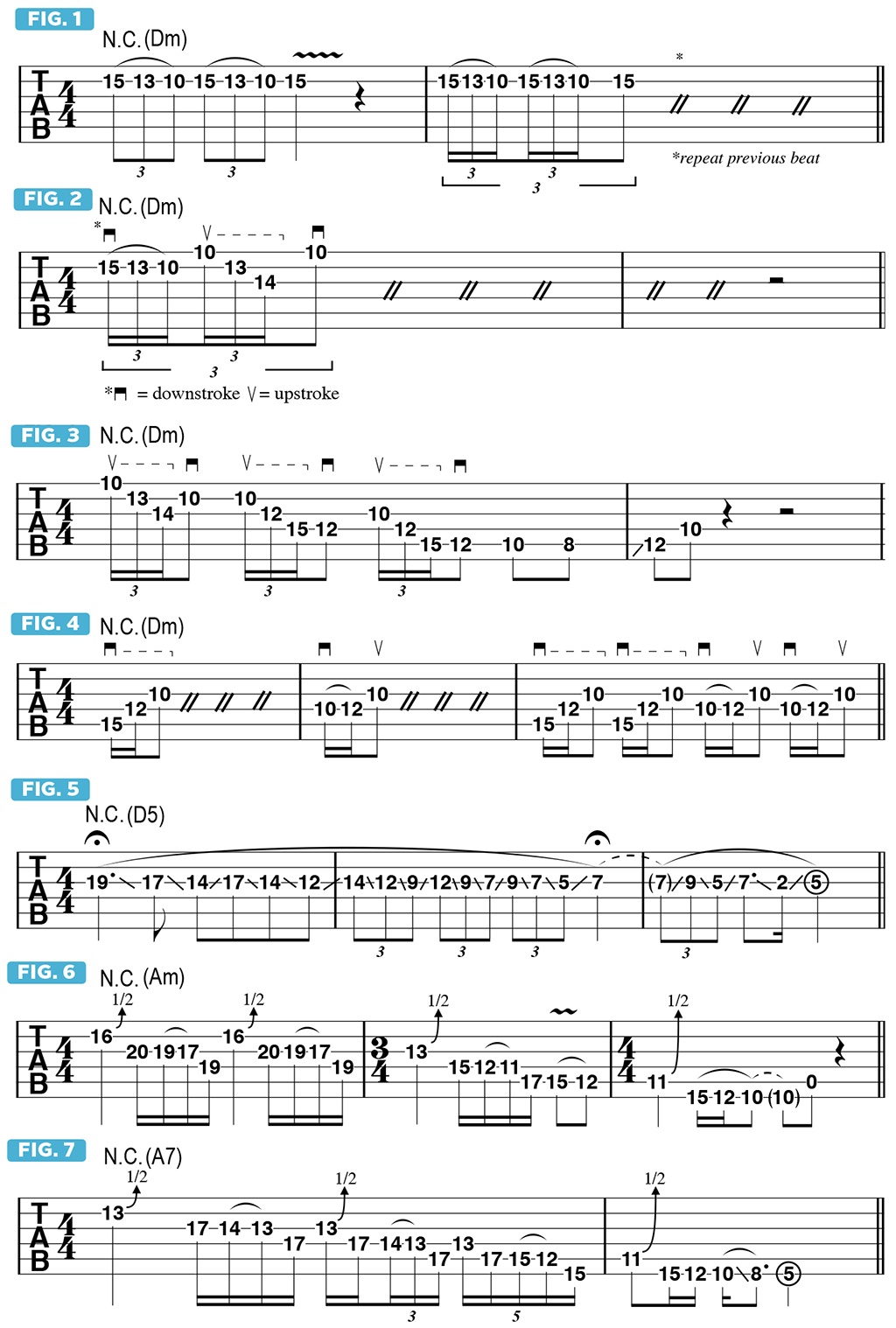Diversify your playing by transferring melodic lines to different string groups
Dweezil Zappa explains his concept of "string transference"
Unusual phrasing is a subject that I’m very familiar with because my dad, Frank Zappa, was probably the most unusual guitar player I can think of, in terms of taking stock articulation techniques and twisting them around. Additionally, his rhythmic ideas were generally rather complex.
Let’s begin this column with a few techniques that can instantly apply to your own playing, and then we’ll get deeper into ones that might require some mind bending before these ideas will come more naturally to you.
One concept that’s really helpful, in regard to unusual phrasing, if you use it as an option with melodic lines, is what I call “string transference.” Let’s say you want to play the three-note sequence illustrated in FIGURE 1, D - C - A. Phrased in this way, the lick sounds pretty normal, in other words, not that distinctive.
Now, if we address these notes on the fretboard in a different way, thus altering the pick attack, the results will sound more interesting. Let’s start with three notes on one string, as before, followed by the same three notes but with each played on a different string, as in FIGURE 2.
The first three notes are played with a downstroke and a double pull-off, and the next three are articulated with a an upstroke sweep, or rake, moving from the high E string to the B and G. The phrase now sounds more interesting because of the varying articulations and dynamics.
We can incorporate reverse rakes as a series of “triplets from nowhere” to achieve unusual melodies phrased in unexpected rhythms, as in FIGURE 3, where a shape is progressively moved to lower groups of three adjacent strings. FIGURE 4 clearly illustrates the differences in the dynamics between one approach and the other - same notes, but a very different sound.
My dad [Frank Zappa] made great use of this technique while also picking really close to the neck and rotating the pick to get a “plucky” kind of sound, which served to accent the changes in dynamics as the lines were played.
All the latest guitar news, interviews, lessons, reviews, deals and more, direct to your inbox!
Another side of this concept is to perform long lines on a single string in the manner of a slide guitar. Slide guitar encourages vocal-type phrases, and one can achieve a similar effect while fretting normally. The trick is to learn how to best approach a target note from below or above. FIGURE 5 presents a long phrase played entirely on the G string with only the index finger.
Another faux slide technique is to repeatedly bend up to notes from a half-step below, as demonstrated in FIGURE 6 and 7. The resulting effect is very unusual and facilitates a wide range of musical expression.
Dweezil Zappa is a brilliant guitarist and son of the legendary Frank Zappa. For the last 12 years he has toured the world performing his father’s music with Zappa Plays Zappa and other ensembles. His latest album is Confessions of a Deprived Youth (Deep Fried Youth).

